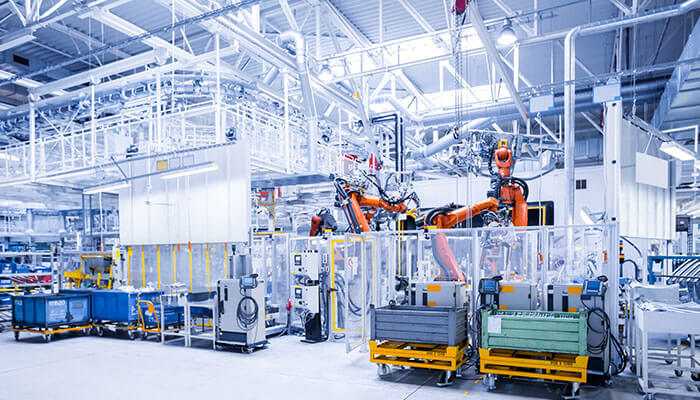What does it take for a state to turn manufacturing into more than just production? In Utah’s, the answer lies in a culture that blends entrepreneurship, innovation, and community values.
The state’s manufacturing boom is not simply the result of building more factories or producing more goods. It reflects a mindset of adaptability, collaboration, and long-term vision. By fostering an environment where tradition meets technology and business growth aligns with community impact, Utah has built a model of manufacturing that stands out in today’s competitive landscape.
Historical Foundations and Early Growth
Utah’s manufacturing story began with necessity. Early industries centered around mining, textiles, and agriculture-related production that supported a growing population in a largely self-reliant state.
These early factories were small by today’s standards, but they built the foundation for a culture of resourcefulness and resilience. The combination of natural resources and a community eager to develop them meant that manufacturing was never seen as separate from daily life—it was part of survival and progress.
Over time, as transportation improved and markets expanded, Utah’s manufacturing base evolved. Industries grew beyond raw materials and basic goods into more complex production.
What remained constant, however, was the mindset: manufacturers had to adapt quickly to shifting markets and demands, often with limited resources. This adaptability became a cultural cornerstone that still defines Utah’s approach to manufacturing today.
The Entrepreneurial Spirit at the Core
One of the defining features of Utah’s manufacturing boom is the entrepreneurial energy driving it forward. Rather than relying solely on large, established companies, much of the growth comes from smaller players and startups willing to take risks.
These businesses often experiment with new processes, materials, and ideas, creating a culture of constant innovation. That spirit of exploration fuels competition and collaboration, raising the standard for the entire sector.
This entrepreneurial mindset thrives because of the supportive business environment around it. Manufacturing in Utah isn’t isolated. It exists alongside a vibrant startup and tech community that values bold ideas and fast iteration.
Manufacturers who adopt these same principles find themselves better positioned to pivot, improve, and compete on a global stage. This cross-pollination between manufacturing and entrepreneurship explains why the state has become a hub for forward-thinking production.
Workforce Culture and Community Values
Behind every successful manufacturer is a skilled workforce, and Utah’s workforce brings unique cultural strengths to the table. A strong emphasis on craftsmanship, pride in work, and a collaborative spirit define much of the manufacturing culture.
Workers see themselves not only as employees but as contributors to something larger, a community effort that benefits families and neighborhoods. This collective approach creates a sense of responsibility that translates directly into quality and consistency.
Community values play an equally important role in shaping manufacturing success. In Utah, collaboration and mutual trust are cultural norms, and they extend into the workplace.
Part of that trust comes from knowing that workers are supported not only by their employers but also by safeguards like the availability of a Utah workers compensation lawyer when needed. This helps employees focus on long-term stability and growth, which in turn fosters loyalty and strengthens the bonds between companies and their communities.
Innovation Meets Tradition
Utah’s manufacturers are proving that tradition and innovation don’t have to exist at opposite ends of the spectrum. Many businesses continue to rely on time-tested skills and processes, particularly in areas where precision and craftsmanship matter most.
At the same time, they are increasingly blending those traditions with modern tools like automation, robotics, and data-driven production. The result is a unique hybrid model that maintains quality while boosting efficiency.
This willingness to merge old and new comes from the entrepreneurial mindset that defines the culture. Rather than abandoning established methods, manufacturers look for ways to enhance them with technology.
This approach reduces risk while still allowing for bold experimentation. It shows that innovation doesn’t always mean disruption. It can also mean building on strong foundations and adapting them to meet new challenges.
Infrastructure and Support Systems
Manufacturing growth doesn’t happen in a vacuum. Utah’s manufacturing boom has been supported by a mix of state policies, education systems, and industry networks that create fertile ground for entrepreneurs.
Access to training programs and partnerships with universities ensures that manufacturers can draw from a pipeline of skilled workers ready to adapt to changing needs. These support systems give smaller businesses a chance to grow without being overshadowed by larger players.
Industry networks and collaborative spaces also strengthen the sector. By bringing together manufacturers, suppliers, and educators, these systems encourage knowledge-sharing and problem-solving across industries.
This sense of connectedness makes it easier for entrepreneurs to find resources, test ideas, and build relationships. For a state with a growing manufacturing presence, these support structures are as critical as physical infrastructure like roads and utilities.
Sustainability and the New Entrepreneurial Mindset
Sustainability has become more than a buzzword in Utah’s manufacturing; it’s a reflection of a broader entrepreneurial mindset that values long-term thinking. Many manufacturers recognize that efficient resource use, waste reduction, and environmentally conscious practices aren’t just good for the planet; they’re good for business.
By treating sustainability as an opportunity rather than a burden, companies are finding ways to innovate while staying competitive. This mindset fits naturally into the state’s culture of resilience and adaptability.
Manufacturers are experimenting with renewable energy integration, water conservation, and circular economy principles, not because they are forced to, but because they see the potential benefits. The entrepreneurial culture encourages them to see sustainability as a challenge worth solving, leading to practices that protect both the environment and the bottom line.
Conclusion
Can manufacturing success be measured only by the products that leave the factory floor? Utah shows that the true strength of the industry lies in the culture behind it, entrepreneurial drive, workforce pride, and a commitment to building communities alongside businesses.
This balance of innovation and tradition has positioned the state not only as a hub of production but also as a blueprint for how culture can fuel sustainable growth. Utah’s story reminds us that manufacturing is ultimately about more than what we make; it’s about how we make it and the future we build in the process.




